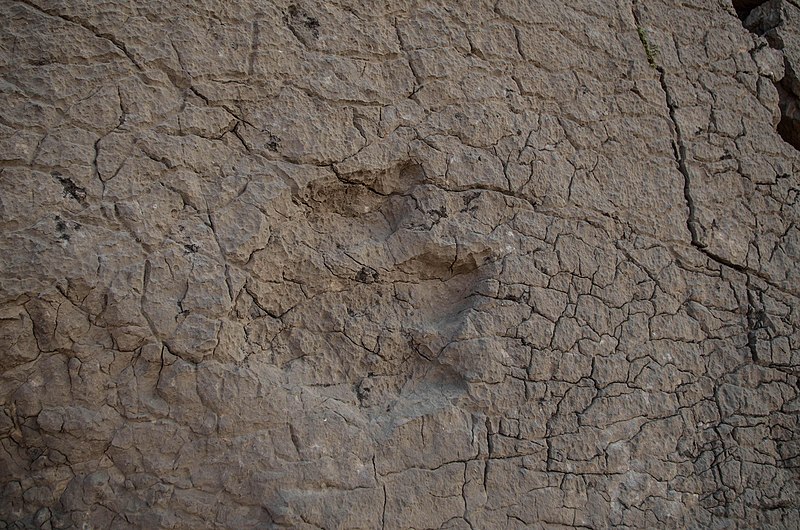THE presence of fossilised remains of dinosaurs and bones, footprints and eggs in Catalunya is astounding.
Now, thanks to two investigations by the Catalan Institute of Paleontology Miquel Crusafont (ICP), 219 icnitas (fossil footprints) have been described.
The fossilised footprints are of tetrapod vertebrates and arthropod invertebrates that lived in the territory of present-day Catalunya about 240 million years ago, before the dinosaurs.
Among the remains described is the Puigventos ichnite (Olesa de Montserrat, Barcelona), of particular importance and interest and the result of the chance discovery of a hiker who, on April 7 2016, found a footprint that appeared to be carved into the rock in an area known as Puigventos.
A plaster cast of the print was made by the town’s council and handed over to the region’s archaeology and paleontology department for its study and preservation.
The Puigventos ichnite turned out to be an impression of the left foot of an archosaur, a primitive group of large reptiles considered to be the ancestors of dinosaurs and crocodiles.
These archosaurs were similar in appearance to today’s crocodiles, walking on all fours, but their legs were relatively longer and more upright than those of current crocodiles.
Archosaurs dominated terrestrial ecosystems after the late Permian extinction, shortly before the appearance of dinosaurs, in the largest extinction on Earth, which, according to palaeontologists, was much more devastating than the one that later wiped out the dinosaurs.
The Puigventos ichnite, found near Olesa de Montserrat, is from the Middle Triassic (about 240 million years ago) and is the best preserved of all the fossilised tracks in the Iberian Peninsula, since it even preserves detailed impressions of the claws and the skin.
This is one of the cases collected in the two studies, which also describe ichnites with footprints of tetrapods (four-legged animals) found in Vallirana and El Figaro, two localities in Barcelona.
Ichnite sites in Spain are amongst the world’s most important for the quantity, quality and variety of the tracks to be found, with Catalunya considered as one of the last strongholds of the dinosaurs.











